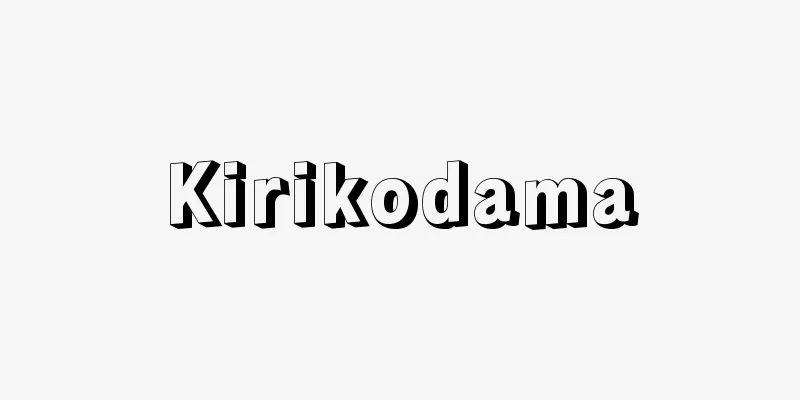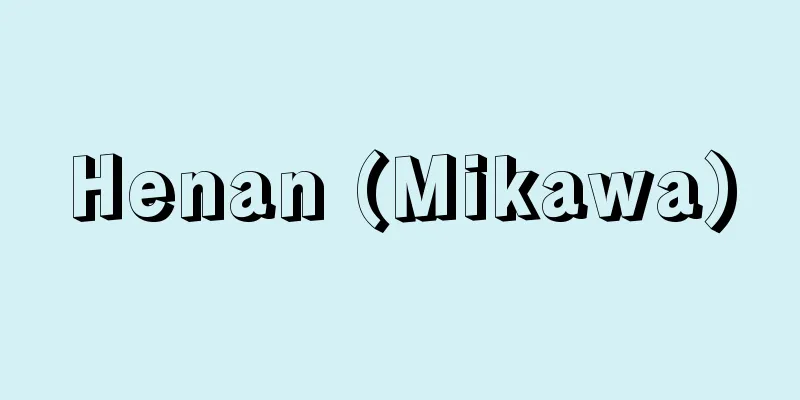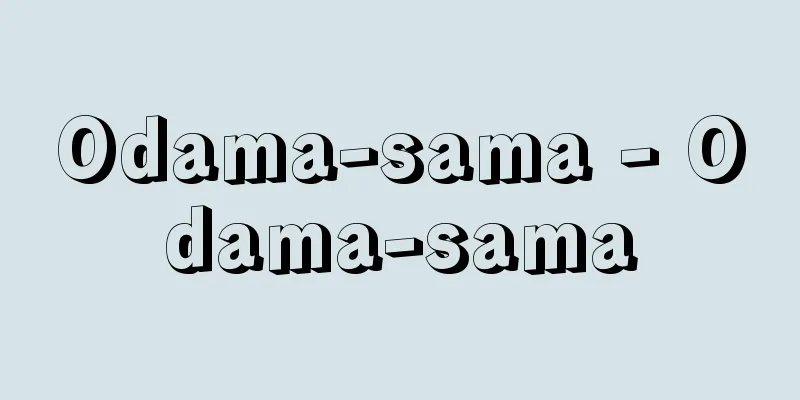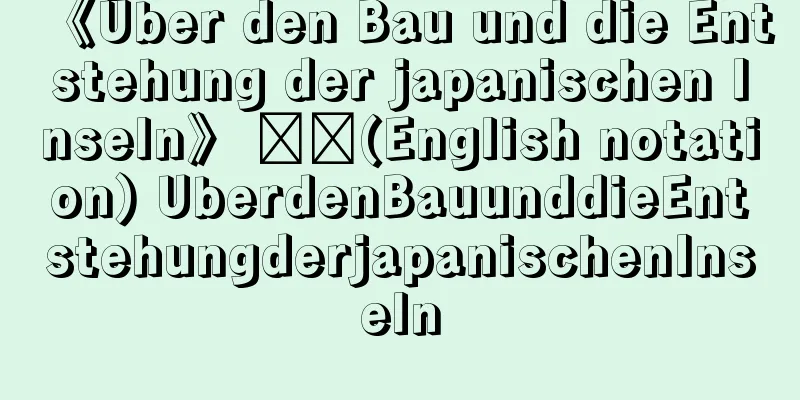Kirikodama

|
A decorative bead in the shape of two truncated pyramids joined together. Its cross section is usually hexagonal, but it can also be square, heptagonal, or octagonal. It is most commonly made of quartz, but agate, glass, buried wood, and wax stone were also used. Most are 1-3 cm long with a bottom diameter of 1-1.5 cm, but there is also a large one measuring 6.2 cm long (excavated from the Koganezuka Tomb in Izumi, Osaka Prefecture). The holes are usually drilled from one side, but the larger ones are drilled from both sides. Cut glass beads were mainly used in the late Kofun period, but some can also be seen in the Nara period. A similar bead in the shape of two truncated cones is called an abacus bead because of its shape. [Mochizuki Mikio] Source: Shogakukan Encyclopedia Nipponica About Encyclopedia Nipponica Information | Legend |
|
截頭角錐(せっとうかくすい)を二つあわせた形の飾玉(かざりだま)。断面は六角形が普通だが、四角、七角、八角のものもある。材料は水晶がもっとも多く、めのう、ガラス、埋(うも)れ木、ろう石なども使われた。長さ1~3センチメートル、腹径1~1.5センチメートルのものが多いが、長さ6.2センチメートルという大形品(大阪府和泉(いずみ)黄金塚(こがねづか)古墳出土)もある。穿孔(せんこう)は片側からが普通だが、大きいものは両側から行っている。切子玉は主として古墳時代後期に使用されたが、奈良時代にもすこしみられる。似た玉で、截頭円錐を二つあわせた形の玉は、その形状から算盤玉(そろばんだま)とよばれている。 [望月幹夫] 出典 小学館 日本大百科全書(ニッポニカ)日本大百科全書(ニッポニカ)について 情報 | 凡例 |
Recommend
Sanhedrin
The highest deliberative and decision-making body ...
Bone (English spelling)
…A port city on the Mediterranean coast in easter...
Osa - Osa
...Productivist constructivism in Russia was crit...
Kelley, OH (English spelling) KelleyOH
...The farmers' movement spread throughout th...
Haavelmo - Trygve Haavelmo (English spelling)
Norwegian economist. Born in Skedsmo. Graduated f...
Pillow - Pillow
A type of seating equipment. A tool for resting t...
One-way flow - Katanagare
A type of roof shape in which the slope flows down...
Kasuga School (Armor)
… Armor craftsmen were known in ancient times as ...
Mine [river] - Mine
A river in southern Germany. It is the largest tri...
Continental Congress
The central organization of the 13 colonies during...
Onomatopoeia - Giongo
〘Noun〙 = giseigo (onomatopoeia) ※Introduction to t...
Pesaro (English spelling)
A city in the Marche region in central Italy. Popu...
Jamuna
…The western end of the Garo Hills is part of Ban...
Rutgers, A. (English spelling) RutgersA
...Another example is M. Argilli, who makes use o...
Gyoninzuka - Gyoninzuka
A mound that is said to have been the location of ...









